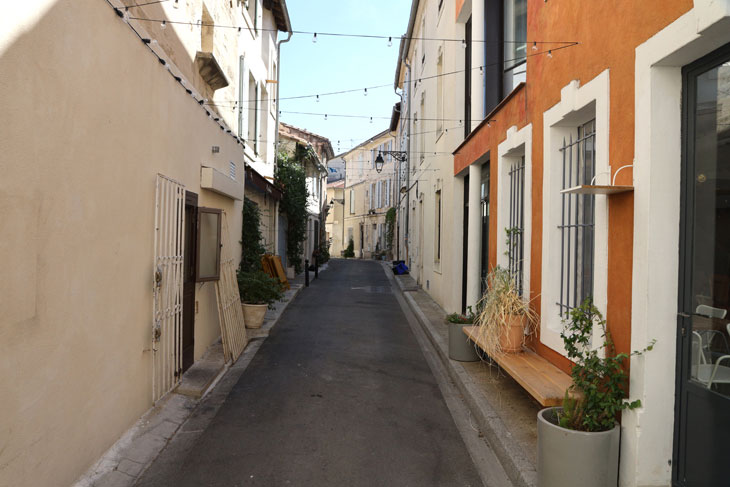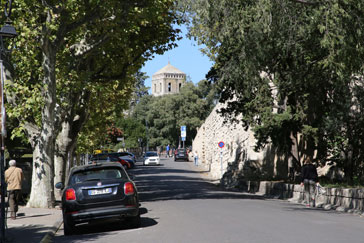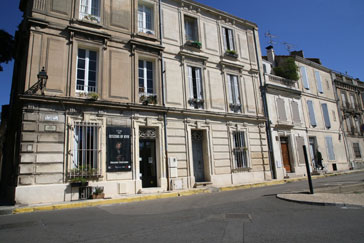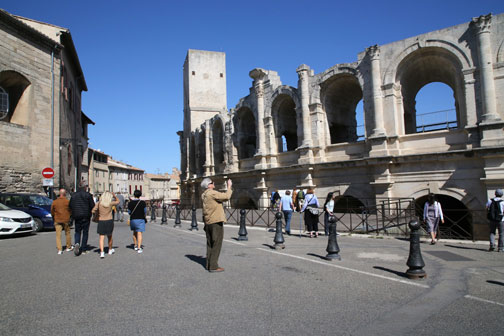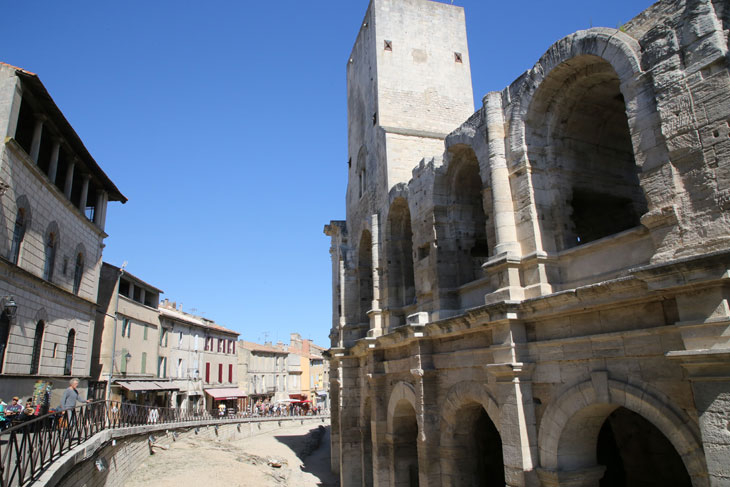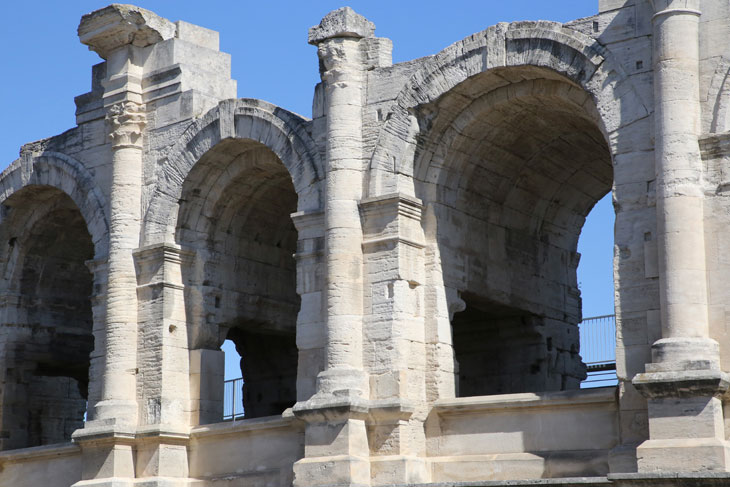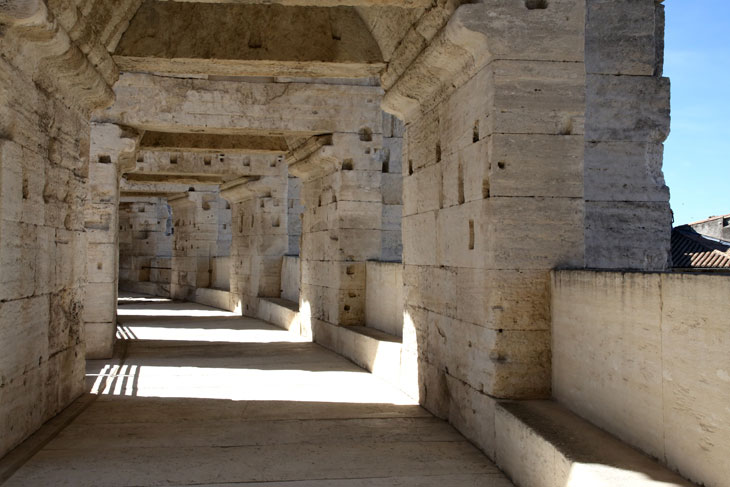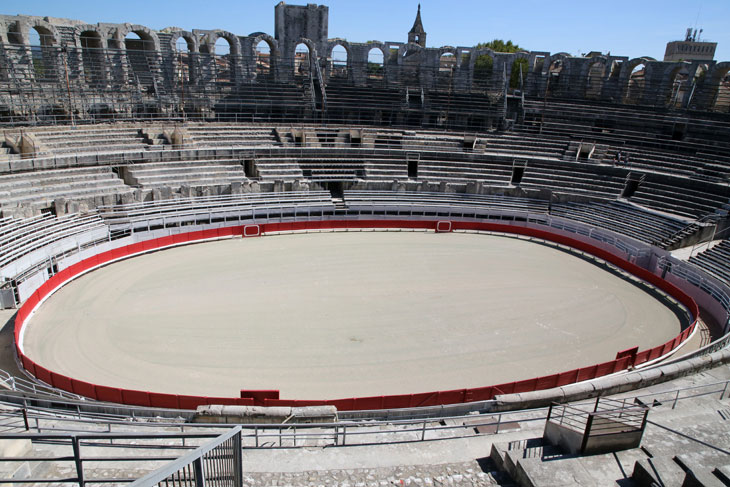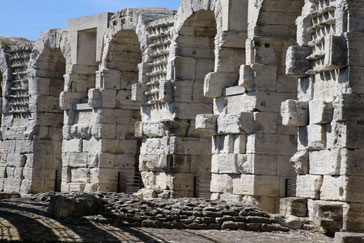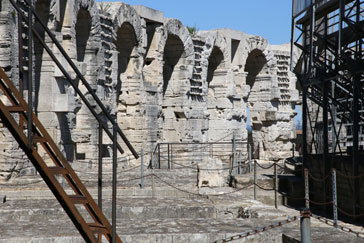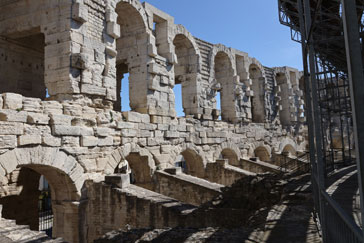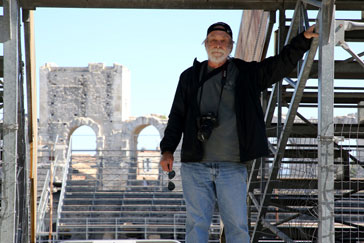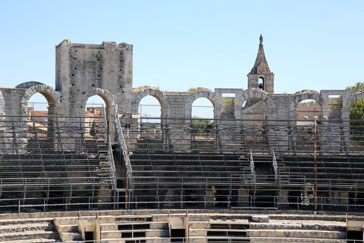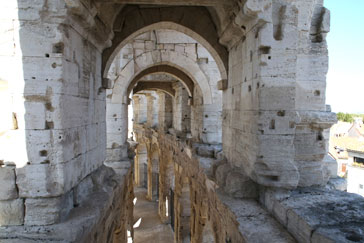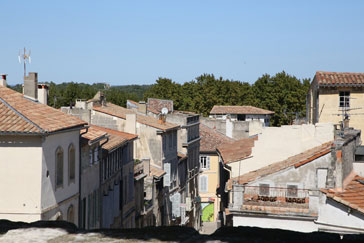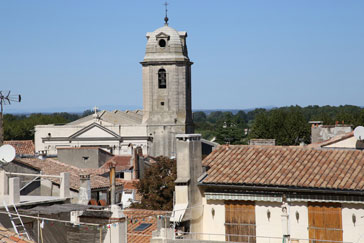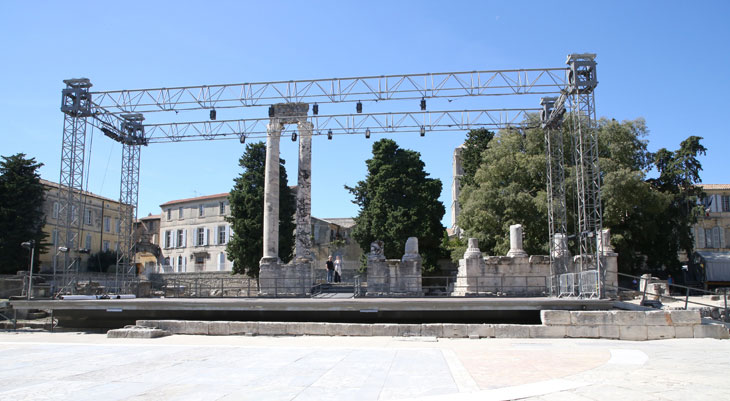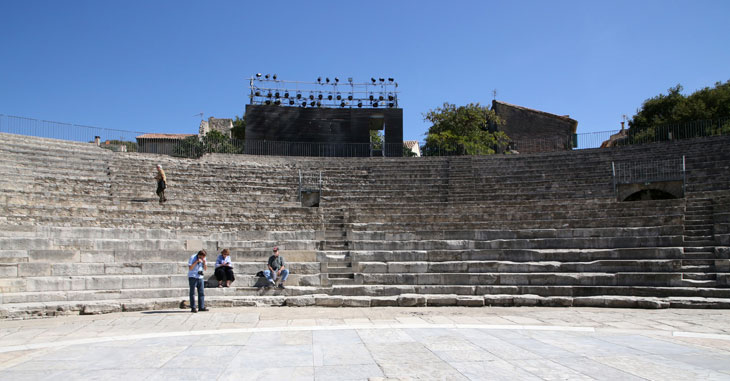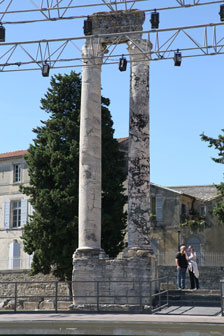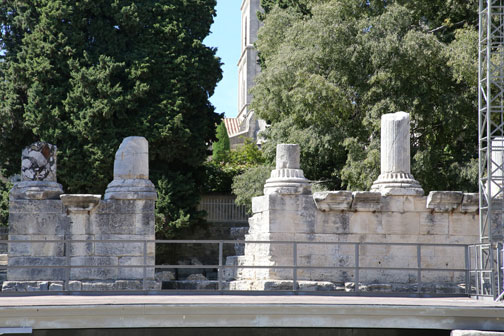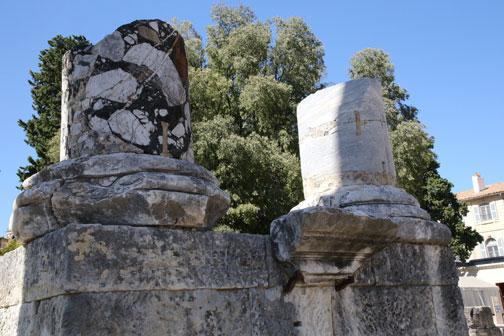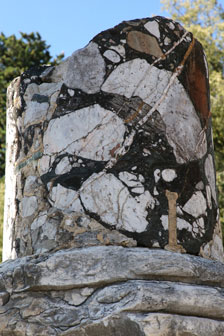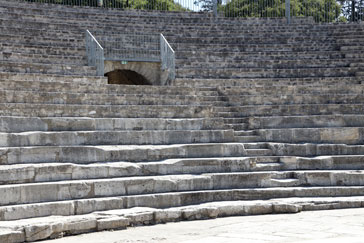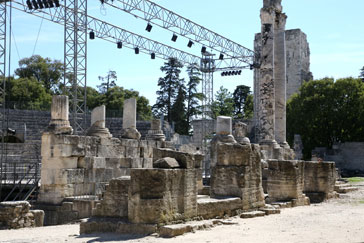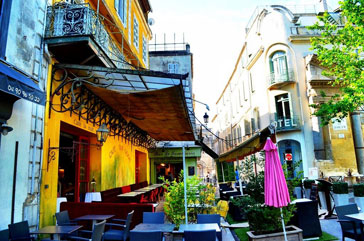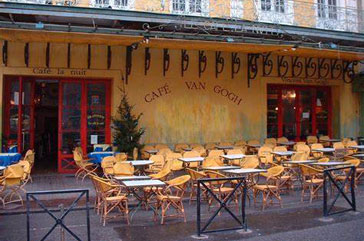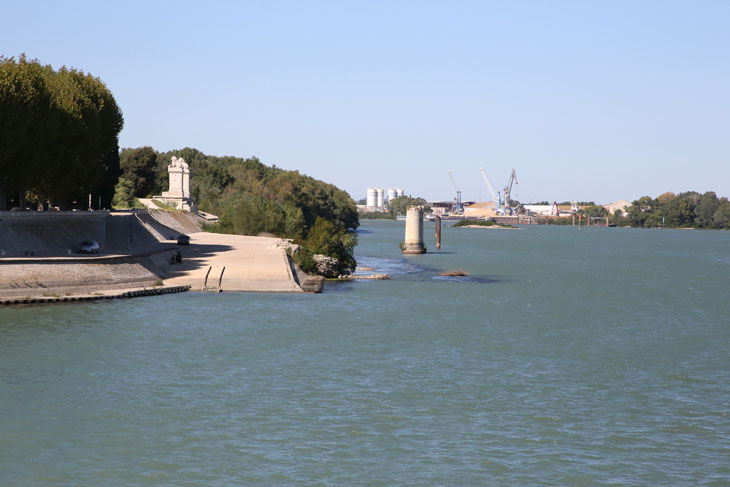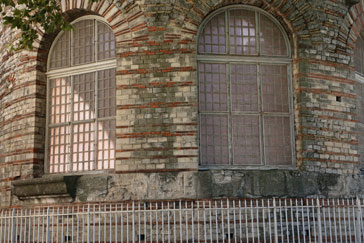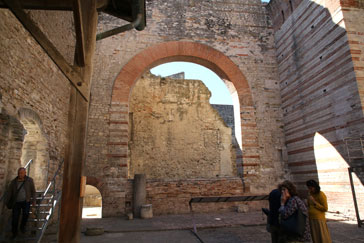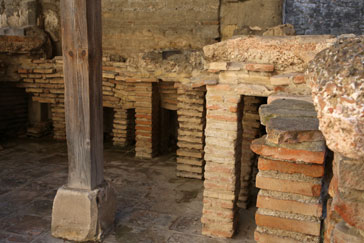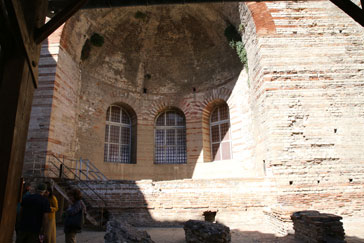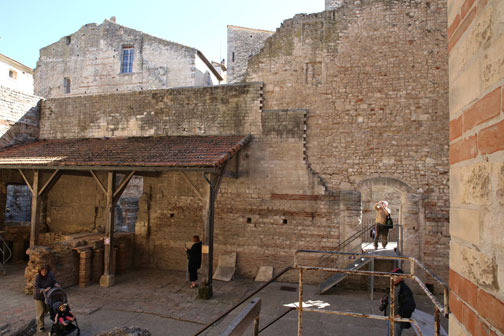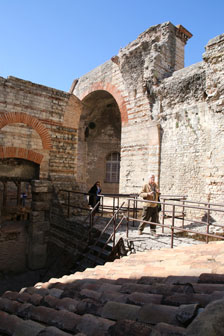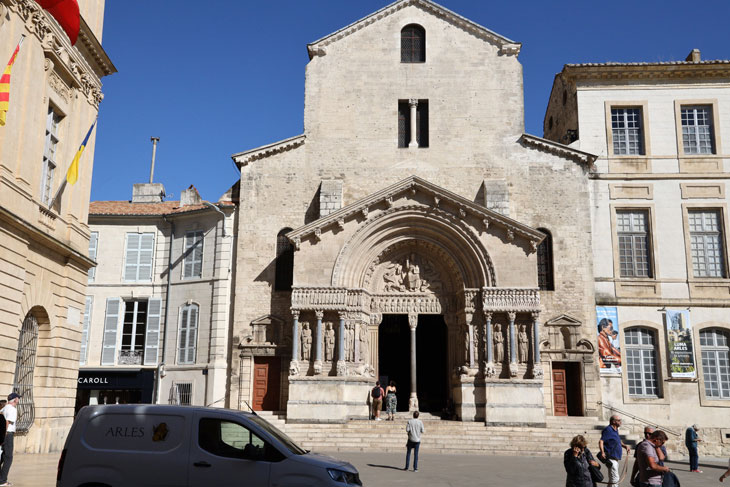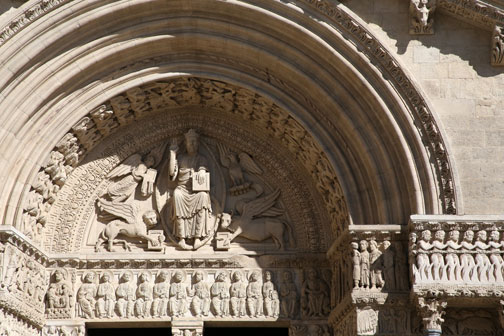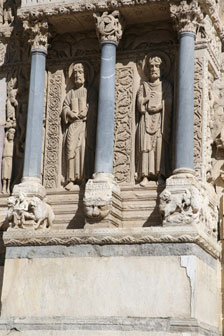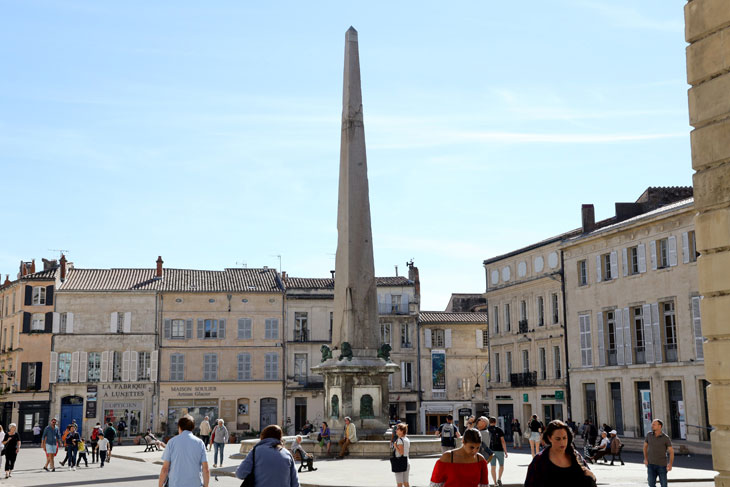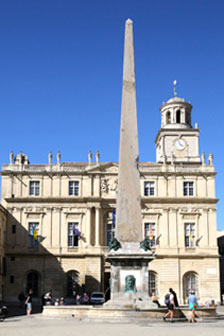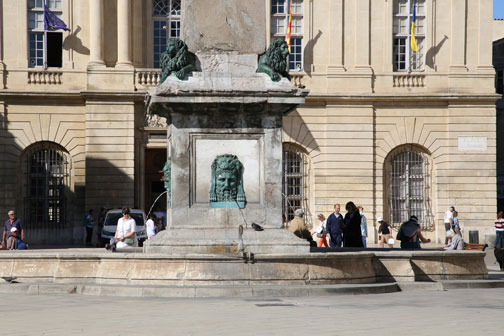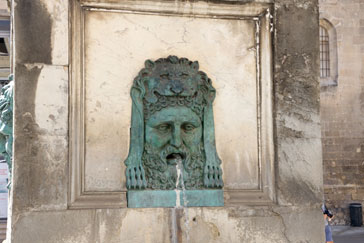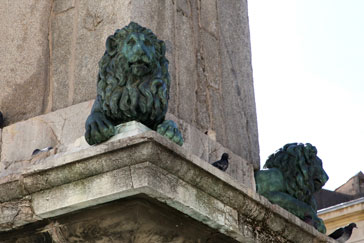Childhood Dreams
Arles
We planned to visit many of the towns near Orgon during our stay in the villa. Our first major outing was to the city
of Arles which is known for having a number of well-preserved historic Roman ruins, It is also the city where Vincent
Van Gogh lived from 1888 to 1889 during which time he produced over 300 paintings and drawings. There was too much to
see in the one afternoon we were there so we ended up concentrating on the Roman ruins.
After squeezing the car into a tiny spot in the parking structure that we somehow happened upon, we wandered about until
we found the amphitheatre. We bought a combination ticket which admitted us to four different sites and two museums in
the town, but, unfortunately, some of them were closed on Monday, and this was a Monday.
These pictures were taken outside the amphitheatre. In the first three pictures below you can see one of the towers that was
added by the Moors in the 5th century when they used the structure as a defensive fortress.
Once inside the arena, we had the place pretty much to ourselves.
Back in 90 AD, the amphitheater could hold 21,000 people. It was a bit hard to believe as we climbed somewhat
rickety metal staircases and struggled up steep uneven stone ones, but concerts, races, and even bullfights are still
held here.
Here are some views of the town from inside the amphitheatre.
After visiting the amphitheater, we went on to the ruins of a theatre built by the Roman emperor Augustus
in the first century BC. This structure is also still in use as a venue for plays and concerts.
It doesn't look that large, but the website I referenced says the theatre can hold an audience of 10,000 people.
The site has been subjected to a lot of pilfering over the years, but it must have quite an ethereal atmosphere with
theatrical lighting.
We took a break at a fly-infested cafe with a Van Gogh theme. I didn't take any pictures, so I borrowed
the 2 photos below from the web.
After our snack, we wandered through old town streets to the Rhône River. A surprisingly powerful wind hit
us as we stepped from the buildings. I'm guessing that it was the mistral.
Our last historic site of the day was the Thermes de Constantin - a Roman bath. Sadly, there isn't much signage
here so it's difficult to understand what you are seeing.
It was time to head back to the parking structure, but on the way we stumbled upon the city's main
square, Place de la République. This is the Church of St. Trophime, a Roman Catholic cathedral built
between the 12th and 15th centuries.
An obelisque dating to the 4th century stands in the center of the square.
We managed to free the Citroën from the parking structure, and to make it back to the villa in one
piece, but it was becoming obvious that driving in Provence was going to be stressful for us.
